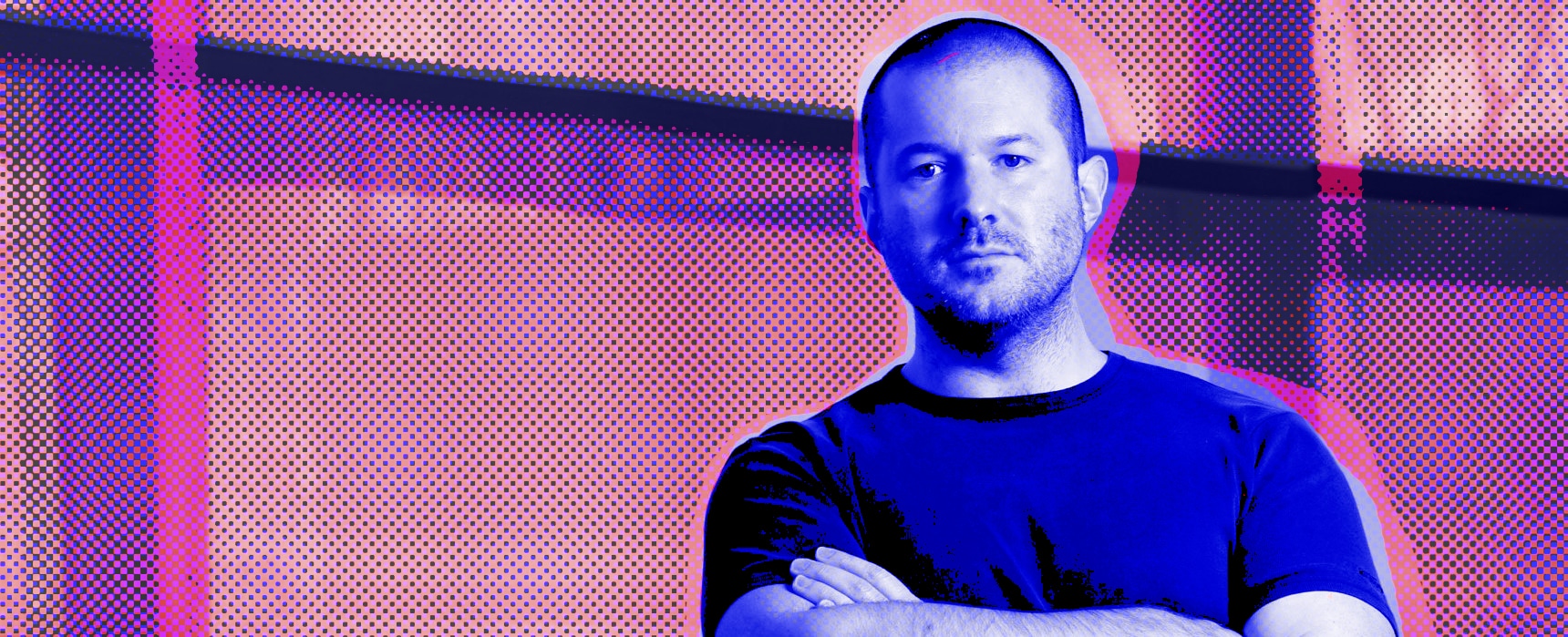On June 27, 2019, Apple announced that chief design officer Sir Jony Ive will depart as an employee by the end of the year to form an independent design company.
According to Apple’s press release, Ive “will continue to work closely and on a range of projects with Apple. Ive is one of the most well-known and celebrated industrial designers of his generation. Born and raised in London, England, Ive joined Apple as a full-time employee in 1992. Over the following years, Ive led the design of the iPod, iPhone, iPad and Apple Watch, among other paradigm-shifting products.
To mark the closing of one chapter for Ive and the start of a new one, we asked some IDSA members to weigh in on Ive’s impact, his forthcoming venture and how the news relates to the current state of ID. Do you have thoughts you’d like to share? Send your ~350 words to Leah Pickett ([email protected])
Ongoing contributors to this story include:
- George McCain, FIDSA
- Ti Chang, IDSA
- Hector Silva, IDSA
- Liana Charles, IDSA
- Chris Brown, IDSA
- Rajat Shail, IDSA
- Hari Nair, IDSA
- Valentina Anania
George McCain, FIDSA
McCainDesign
Few industrial designers enjoy the acclaim accorded to Jony Ive’s career. Starck, Loewy, Rams and Esslinger come to mind. Ive certainly is responsible for more revenue than all of those designers combined. But design is more than revenue. Much more. Unfortunately, “business” has still not learned that lesson. In a recent opinion piece in Bloomberg Business by Shira Ovide, “Time Was Up for Jony Ive and Apple’s Cult of Design,” the author seems to think Industrial Design is a cult, or some kind of fad that fades in and out of fashion and blinds the company to the bottom line and Wall Street’s needs. The author also states that Apple “needs to move beyond its hardware obsession as technology evolves and becomes embedded in everything.”
Jony Ive, certainly due to Steve Jobs’ maniacal obsession with design and perfection (which Jony shared completely), had a profound impact on the Industrial Design and manufacturing practices in the world of consumer products over the last few decades. Any third-party accessories for Apple products and any product offerings from companies in the high-tech space had to meet Apple’s design and quality standards, and that is a high bar indeed. It is so refreshing to see mundane objects like “wall warts” and even utilitarian products from companies like Square hew to the exacting spare, elegant, undecorated and pristine attributes of Ive’s vision: zero degree walls, Class A gloss finishes, pure white or absolute black colors, no chrome plated plastics allowed, and on and on.
Some of these tributes to Ive feel like eulogies, but Jony is very much still alive and thriving. But it does feel in some ways like a eulogy for Apple. It will especially be a eulogy if they heed the advice of Bloomberg Business, and it feels like they may. It is disconcerting that the two unfortunate design managers who have been tapped to follow in Ive’s footsteps will not be reporting to a “power of design cognizant” Chairman of the Board (even if they reported to the Apple Chairman, Tim Cook is not Steve Jobs, he’s an operations guy). They will instead be reporting to the COO, Jeff Williams. Williams may be extremely competent, but he surely doesn’t have a vision or a passion for design. If Williams is looking at the bottom line, and Cook is looking at the bottom line, design at Apple is in danger of becoming a commodity no matter how good the design teams are.
Tom Watson, one-time CEO of IBM, famously said “good design is good business.” Industrial Design is all about the human interface with the world. It happens to involve a component that is not quantifiable in an operations context but is needed because humans need emotional (beauty, elegance) connections to the world.
We may be looking at the end of an era.
 Ti Chang, IDSA
Ti Chang, IDSA
Co-founder and VP, Crave
Sir Jony Ive’s impact on industrial design in America is undeniable. Despite being a British industrial designer, he elevated design in the United States by helping to create one of the most valuable companies in the world, Apple. When most corporations were bickering about the role of design or whether it was justified to have a design department in the early 2000s, Jony and his team were quietly showing America the power of thoughtful industrial design while educating companies and the public alike on the depth of design, beyond just the pretty form and surface finish.
His legacy shows that when design and business are mutually respected it can build an enduring, profitable and powerful brand. The departure of Ive ushers in a new era at Apple as it continues to build on the core design ethos instilled by Ive and the founding design team. As an alumnus of the Royal College of Art (Design Products 2007), I’m excited to see how his role as the Chancellor will guide the future of RCA.
 Hector Silva, IDSA
Hector Silva, IDSA
Chair, IDSA Chicago
Design Lead, H Design
Research Associate Professor, University of Notre Dame
A few weeks ago, Jony Ive shocked the design world when he announced he was leaving his position at Apple, after 25+ years of designing for the most valuable company in the history of the world. He is set to team up with famed designer Marc Newson and start their own design consultancy under the name LoveFrom. The name derives from a conversation Steve Jobs was having with an employee, where he mentioned that “when you make something with love and with care, even though you probably will never meet . . . the people that you’re making it for, and you’ll never shake their hand, by making something with care, you are expressing your gratitude to humanity, to the species.” Jony was immediately moved by this and it speaks volumes, as LoveFrom defines why he does what he does it.
When I first heard the news of Jony leaving, I was in shock, a little disappointed and concerned. I started to breathe heavily and needed to sit down. But after a while of doing some deep thinking and talking to my colleagues, I came to a realization that this can be good for design and for Apple. Jony is entering uncharted territory and this must be super exciting for him. He’s also not leaving without taking a slice of Apple with him, as Apple will be his first client. There were rumors that things were not going so well internally for the design team at Apple. True or not, the move will allow Jony to take more risks with the designs he does for Apple. I think the new MacPro is evidence of this. It recently caused major controversy with the design, but I love it—and with time, you will too. It’s natural for us to immediately jump to conclusions and judge something we don’t like or don’t approve of. I think as designers we need to be patient, step back and understand the whole story.
Apple has very talented designers. I’m sure it’s pretty easy to attract top talent (I mean, it’s Apple), and to follow in the footsteps of Jony, what an opportunity. I’m not concerned at all. They already have great designers working on next year’s product line. Jony, he’s definitely going to be okay. He now calls the shots with full autonomy, and I’m super excited to see what else he can do besides tech. This might set off an imbalance in the SF/Silicon Valley design community—will every investor with money now come to Jony, as opposed to Yves or a frog? Who knows what the effects will be. We’ll have to wait for the dust to settle. Overall, I think this is a very exciting move, and I’m looking forward to seeing what else Jony Ive has to contribute to the field of Industrial Design.
 Liana Charles, IDSA
Liana Charles, IDSA
Packaging Designer & Engineer, Newell Brands
I’m not sure how you can think of timeless designs and not think of some of the most iconic products that became part of our homes in the early 2000s. We were fortunate to have Jony Ive continue to pave the way of excellence that showed each product’s design intent clearly and connected with so many users. Whether you are a fan of Apple’s design language or not, Jony’s aesthetic consistency shows a level of confidence in his work that is admirable.
I remember first seeing the iMac’s vibrant colors as a kid, which to me resembled candy. The pop of color, smooth form and transparency were meant to be inviting and approachable, which revealed the mysterious aspects of the computer. But that was what made his work so revolutionary! For the longest time, I couldn’t verbalize why I had an attachment to products such as the first-generation iPod, but I knew I loved it. It is his forward thinking that took Apple to launch an array of successful products and has now evolved to leading the company’s branding in other areas such as software, architecture, user experience and even the retail environment.
Although his semi-departure from Apple has left many people with questions, I am excited to see what his new team can do in his newest company, LoveFrom. There’s so much to learn just by following a designer’s journey through years of commitment, building a family-oriented design team, success/failures and how even personal life-challenges can change why you do what you do.
 Chris Brown, IDSA
Chris Brown, IDSA
Sr. Business Developer, Design Central
The news that Jony Ive would be leaving Apple this year left me with the melancholy feeling one experiences at their high school graduation, the early retirement of a sports hero, or the final season of Game of Thrones (though perhaps that was more disappointment than melancholy). These moments are markers of a shift in one’s understanding of the world around them. I truly loved the world of Apple according to Jony. After hearing this news, I find myself asking, will I love it after? He has been a legendary design icon for the last two decades. Each time I watched a keynote I responded with, “Yes! I want that!” Will those feelings of excitement return in the future? Does his departure, and my reaction to it, have a deeper meaning?
I wonder if this melancholy feeling came from something deeper than Jony’s decision to leave. Maybe it comes from the shifting sands of the industry. To me, this was just more evidence indicating the end of the industrial design era we’ve known for 50+ years. I read in an article on Fast Company that Jony had checked out upon the release of the Apple Watch, largely due to the product being released as merely an accessory to the iPhone when he had envisioned that it would be designed as an independent fashion accessory. This made me realize that products are accelerating into the connected age, and the priorities of coming generations will in no way match those of Boomers, Gen-X, or even Millennials. The time of teens saving up for American muscle cars to drive the back roads is out, and the time of teens saving for the experiences of globe-trotting (both physical and virtual) are in. We cannot force old methods onto new consumers.
Regardless of my reactions, I trust that success will continue for both Apple and LoveFrom, and I am excited to see what new products will be developed under this burgeoning relationship between them. The name LoveFrom is beautifully sentimental and I hope their team and culture truly embody that attitude. I see it as a salutation to consumers, clearly stating that they have love for those who will own the products they will design in the future. I believe Jony’s separation from Apple and his creation of this new company is an invitation for all of us to step into a new era: the new era of product, the new era of design, and the new era of humanity.
 Rajat Shail, IDSA
Rajat Shail, IDSA
Senior Director, User Experience Design, Resideo
As I join the band of fellow designers to capture my views and opinions around the departure of arguably the greatest industrial designer of our time, Sir Jony Ive from Apple, I’m reminded of the words of one of the greatest baseball players of all time, Mickey Mantle: “You don’t realize how easy this game is until you get up in that broadcasting booth.”
It was only few years back when we didn’t even need to squint our eyes to see Apple’s stolen signature design elements and simplistic interaction models sprinkled across various companies and products. If imitation is the purest form of flattery, then it seemed the whole world was attempting to appease Ive.
Ive’s work at Apple has not only yielded tremendous growth for Apple, it has also influenced fast followers and adjacent industries. Most of all, it has allowed us to understand and demand more from technology. State-of-the-art technology was no longer contrived and esoteric, appealing only to the section of hoodie-wearing, Twinkies-eating, sleepless tech nerds. It opened the doors and showed us a new paradigm of interaction design, making technology accessible and simple enough for a three-year-old toddler or an 80-year-old grandma.
Ive’s innate ability to contextualize Rams’ philosophical approach to today’s technological capability and marry it with the tenacity of Steve Jobs’ vision cannot be argued. Ive provided clarity, creativity and craft to the audacity of Jobs’ vision. One could not have succeeded without the other.
While I applaud the quantum of work Ive has created and how he ushered a design revolution, I’m disappointed at his lack of succession planning. With the likes of Alan Dye and Evans Hankey, it is sad to see Apple replace Ive with Jeff Williams, a procurement guy in charge of product design leadership. Yes, one must stay hungry and foolish, but this is simply stupid.
Hari Nair, IDSA
CEO, Design for Winning | Professor, SCAD | Board Member, Spark Design Awards
This is really sad news for design at Apple. There are multiple layers of damage being done, apart from Ive’s departure, mostly centered around the future of design at Apple and elsewhere. Apple under the leadership of Jobs and Ive helped establish unprecedented credibility and stature for design in business. It remains a quintessential example of design gaining and keeping a seat at the table, win after win, until today.
Today, a COO with procurement experience is to take over as CDO! Hard to believe that Jony Ive did not have a succession plan in place, essentially leaving design an orphan, at Apple! The design function itself seems divvied up into product design and interface design, showing no cohesiveness or unity. This again is not anyone’s fault but just the way the discipline is splintering. But somehow we thought Apple could do better to maintain continuity of design leadership. The design community is watching.
Valentina Anania
Designer – Environments, Brands, Experiences
Jony Ive is leaving Apple. The news is echoing globally like the biggest shock of all time. And yes, this leaves a sense of emptiness. but I believe it’s for the better.
The way the news was announced, suddenly and without Apple’s disappointment, causes me to reflect upon two aspects: First, about the nature of design and second, on the relationship between designers and companies.
Change is in the nature of any creative (or it should be) and is part of the transformation of any creatively driven company. Jony Ive is an innovator; he has the great ability of silently combating all the conventions of Silicon Valley design yet transforming them. He crafted his position (fostered by Steve Jobs) to be as multidisciplinary and holistic as possible.
Designers can not limit their range of action to a few ideas; it’s not enough to fulfill that need and desire of the fresh and new. This is a very European way of looking at design, and maybe this is why many in the Valley do not understand his choice and just focus on business values, losses and gossip. As a European, I embrace his choice and I see this as proof that design is not something that can be boxed in or compartmentalized.
The other interesting thought I had is about the mutual benefits that both Apple and Ive will gain from a different type of cooperation. Being less involved with the day-to-day aspects of the company, Ive will be able to support Apple with a fresher and more detached pair of eyes. This will generate more genuine designs and solutions, less constrained by the company’s surroundings and internal politics. The successful team grown during these years needs to enjoy the newly earned personal space and experience varying opportunities, returning refreshed with more productive work.
This could be taken as a warning for all those companies that have in-house designers. Maybe outside consultants allow a diversity of product offerings and freshness, while Internal Design groups run the risk of becoming monotonous and reiterating based on the daily company influence.
Only the soon-to-come future can reveal this. For the moment. I can only wish Jony Ive a good luck for his new life and new venture.
Max Burton, IDSA
CEO and Chief Designer, MATTER 
I had the good fortune of meeting Jony Ive when he was a partner at Tangerine in the early 90s before he went to Apple. It is because of him that industrial design reached new stature in the business community.
I remember during the early part of my career I would suggest to clients that good design and product quality were essential for business success. “Take a look at what Apple is doing” was my battle cry. The response in the late 90s and early 2000s was how small and insignificant Apple was when compared to Microsoft and others. How things have changed! Now I have clients referencing Apple all the time.
Jony’s work, and the work of his team, directly contributed to making Apple one of the world’s most valuable companies. It also demonstrates that good design can make people’s lives easier and more fulfilling while significantly impacting the bottom line. Thank you, Jony!
